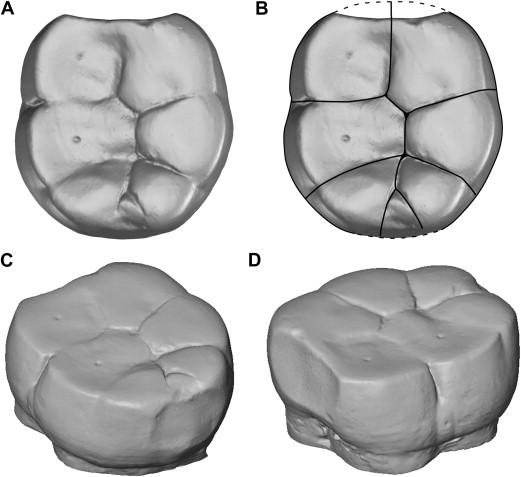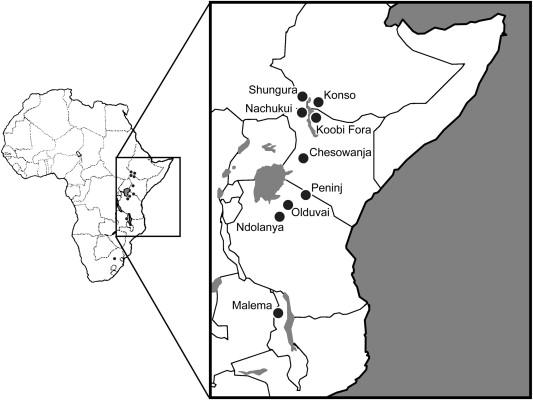Frederick E. Grine | Rachel L. Jacobs | Kaye E. Reed | J. Michael Plavcan
Source - http://www.sciencedirect.com/science/article/pii/S0047248412001157

Location of Early Pleistocene Paranthropus-bearing sites in South Africa.
Abstract: The specific attribution of the large hominin M2 (GDA-2) from Gondolin has significant implications for the paleobiology of Paranthropus. If it is a specimen of Paranthropus robustus it impacts that species' size range, and if it belongs to Paranthropus boisei it has important biogeographic implications. We evaluate crown size, cusp proportions and the likelihood of encountering a large-bodied mammal species in both East and South Africa in the Early Pleistocene.

The Gondolin GDA-2 Paranthropus M2 reconstructed from stacked micro-CT images. A) occlusal view, mesial to top and buccal to left; B) occlusal view showing delineation of the cusps and reconstruction of the mesial and distal crown contours; C) distobuccal view; D) mesiobuccal view. Images courtesy of M. Skinner.
The tooth falls well outside the P. robustus sample range, and comfortably within that for penecontemporaneous P. boisei. Analyses of sample range, distribution and variability suggest that it is possible, albeit unlikely to find a M2 of this size in the current P. robustus sample. However, taphonomic agents - carnivore (particularly leopard) feeding behaviors - have likely skewed the size distribution of the Swartkrans and Drimolen P. robustus assemblage. In particular, assemblages of large-bodied mammals accumulated by leopards typically display high proportions of juveniles and smaller adults. The skew in the P. robustus sample is consistent with this type of assemblage. Morphological evidence in the form of cusp proportions is congruent with GDA-2 representing P. robustus rather than P. boisei. The comparatively small number of large-bodied mammal species common to both South and East Africa in the Early Pleistocene suggests a low probability of encountering an herbivorous australopith in both. Our results are most consistent with the interpretation of the Gondolin molar as a very large specimen of P. robustus. This, in turn, suggests that large, presumptive male, specimens are rare, and that the levels of size variation (sexual dimorphism) previously ascribed to this species are likely to be gross underestimates.

Location of the Paranthropus-bearing localities in East Africa. Malema is situated some 2000 km from Omo Shungura and Konso; a further, 2000 km separates Malema from the Paranthropus-bearing sites of South Africa.